San Francisco was inhabited by the Native Americans before the arrival of Europeans. The United States conquered San Francisco on July 1846 when USS Portsmouth sailed into San Francisco Bay and sailors and marines went ashore and raised the US flag. Before the discovery of Gold in 1848 the population of San Francisco was only about 800. On January 24, 1848, the first gold was found at Sutter’s Fort, in the California foothills. Within a year the population reached 25,000. The city was a wild town with high crime rates, prostitution, and gambling. Six major fires broke out between 1849 and 1851. The gold boom was ended in 1853 and silver was discovered in 1859. Unlink gold the silver required expensive equipment to extract so a number of ‘silver barons’ were the main beneficiaries.
During the late 19th century, San Francisco thrived and developed. The first cable car service began in Clay Street in 1873. Construction of the Central Pacific Railroad brought a large influx of immigrants and laborers from China. San Francisco’s Chinatown became the largest Chinese settlement outside of Asia. The San Francisco Stock and Bond Exchange was founded in 1882.
Here below are some stunning historical photos that show San Francisco in the late-19th century.


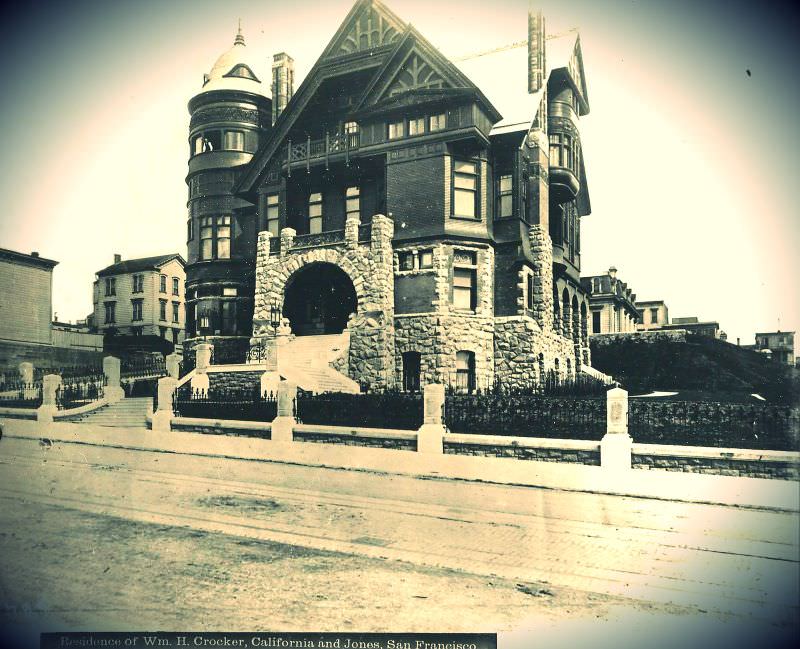
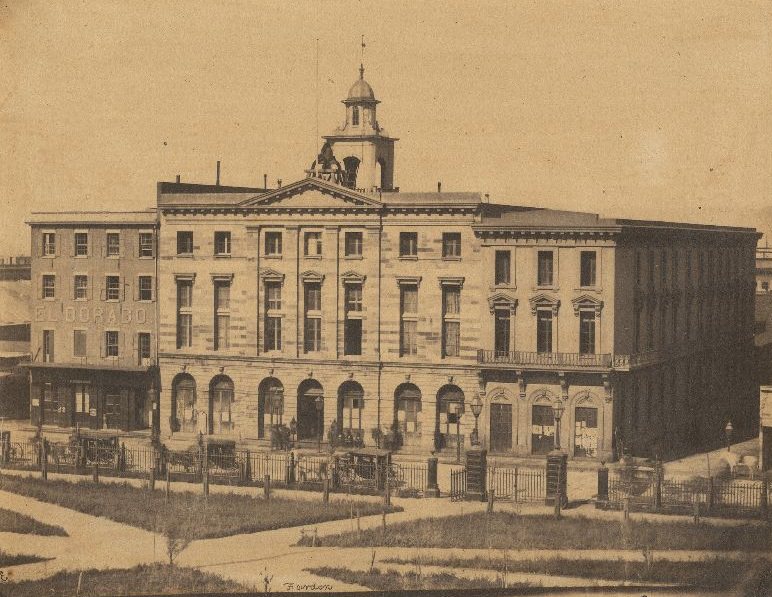
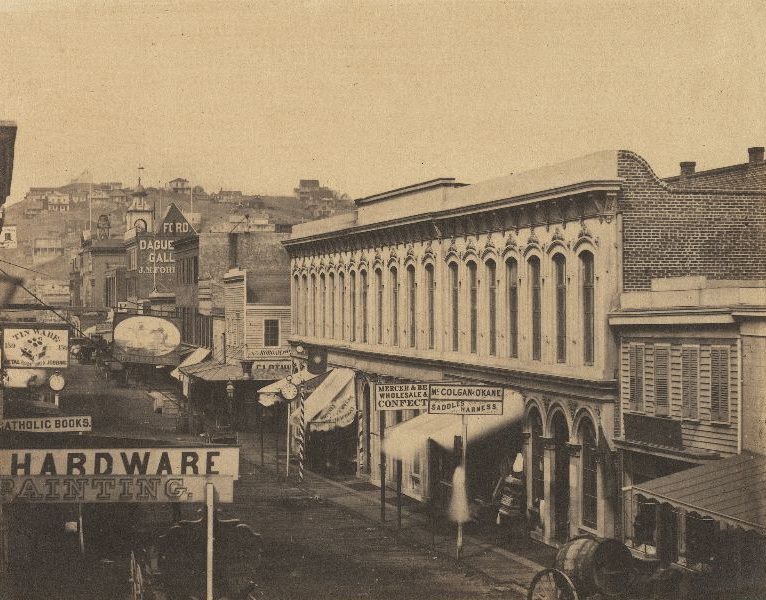
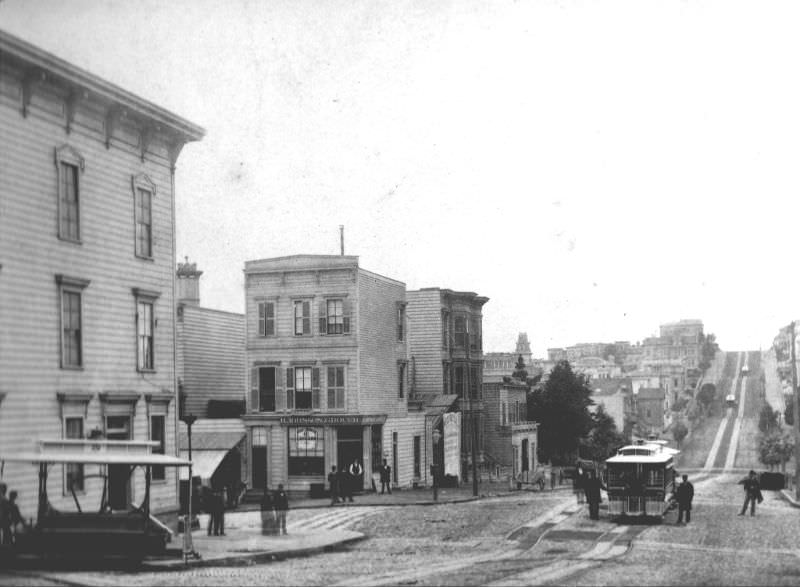
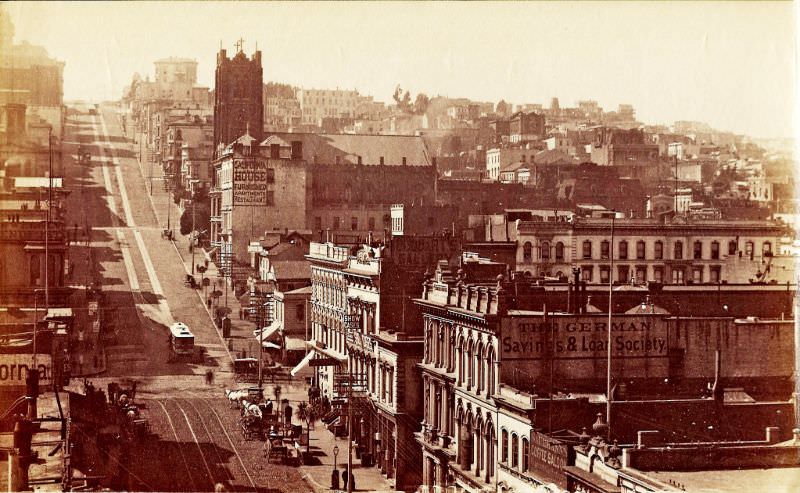
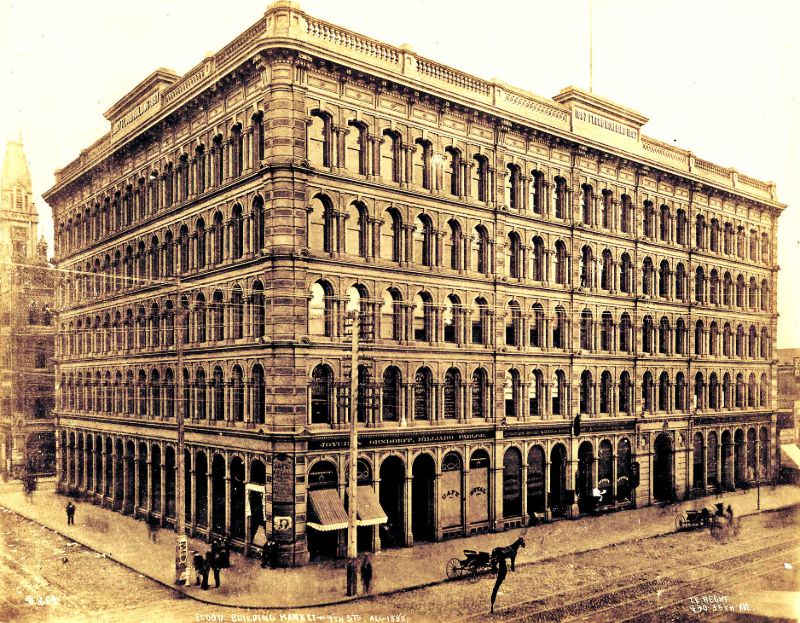
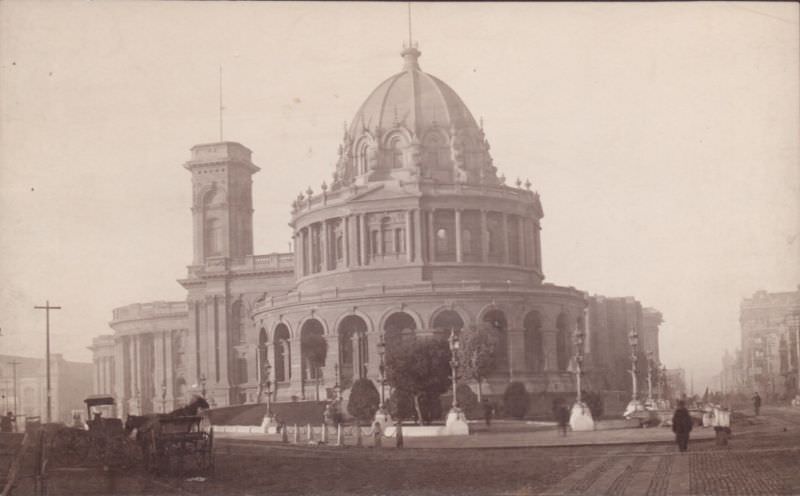
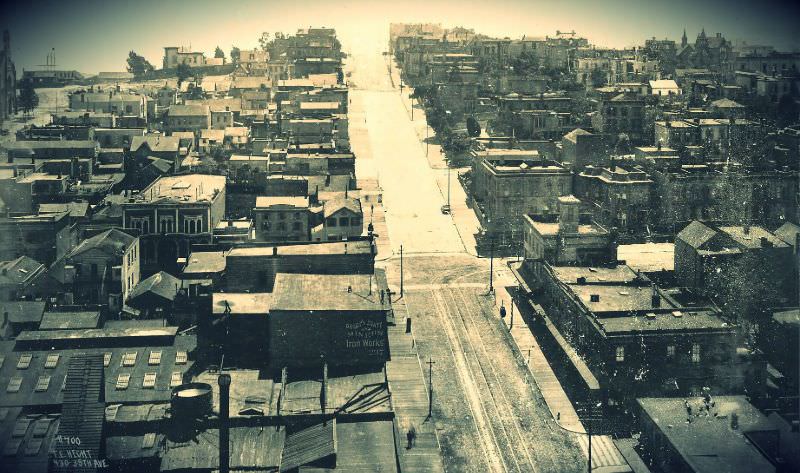
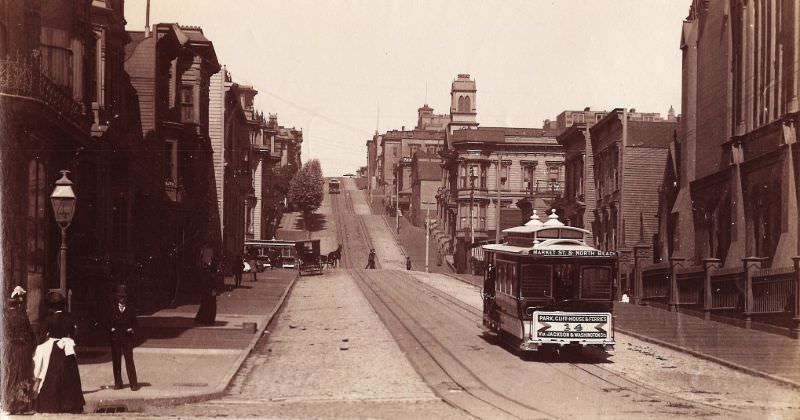
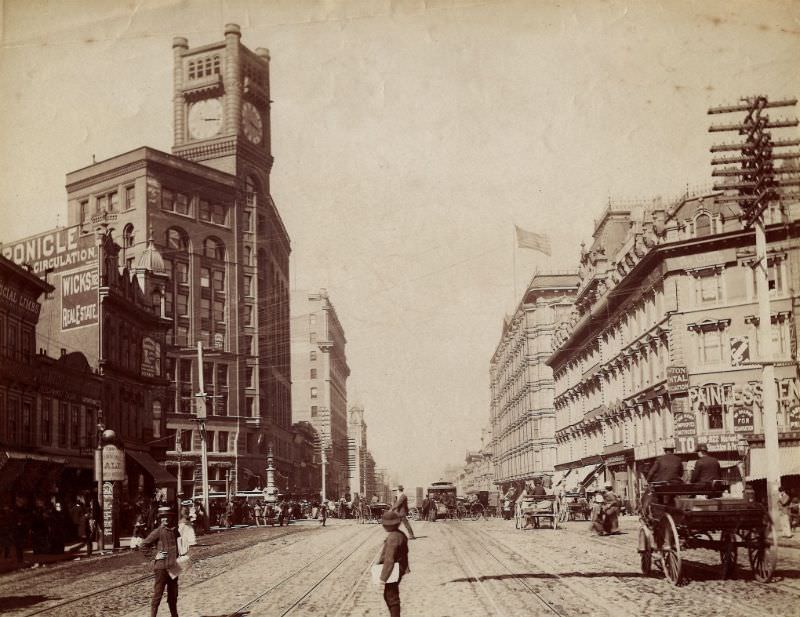
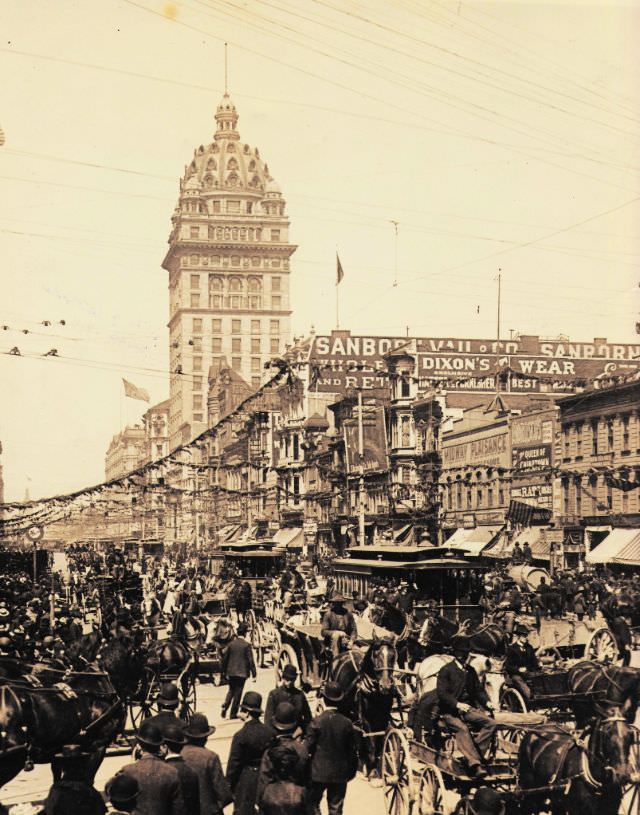
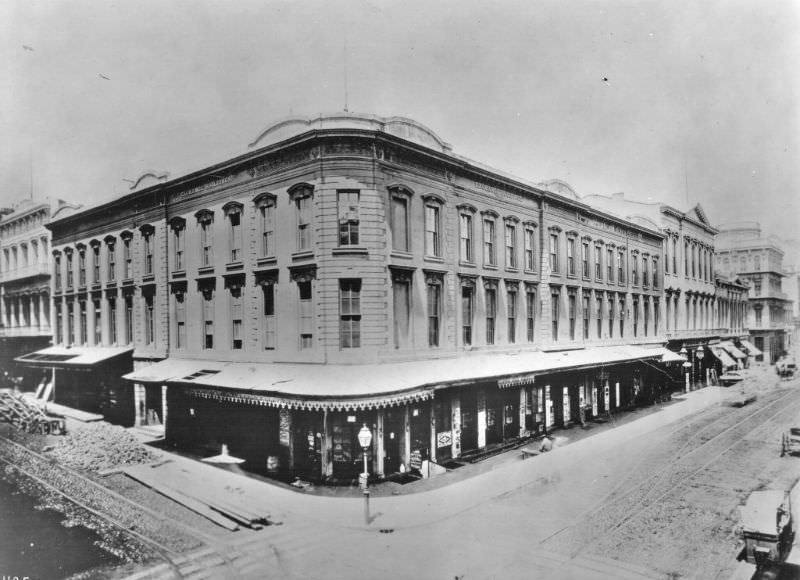
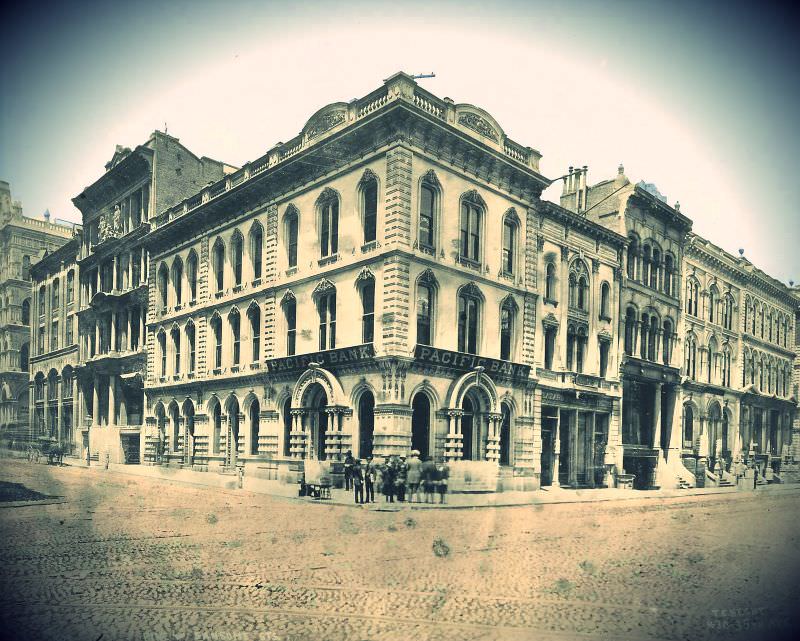
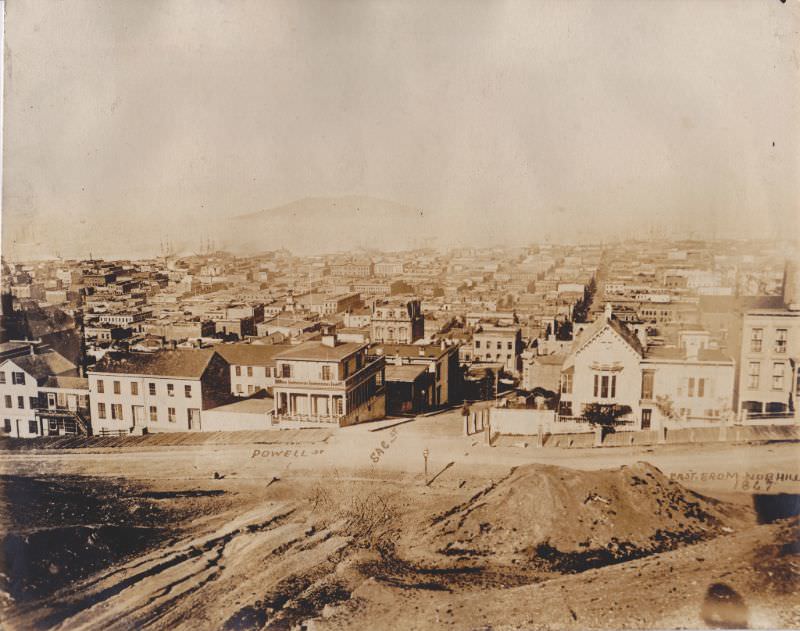
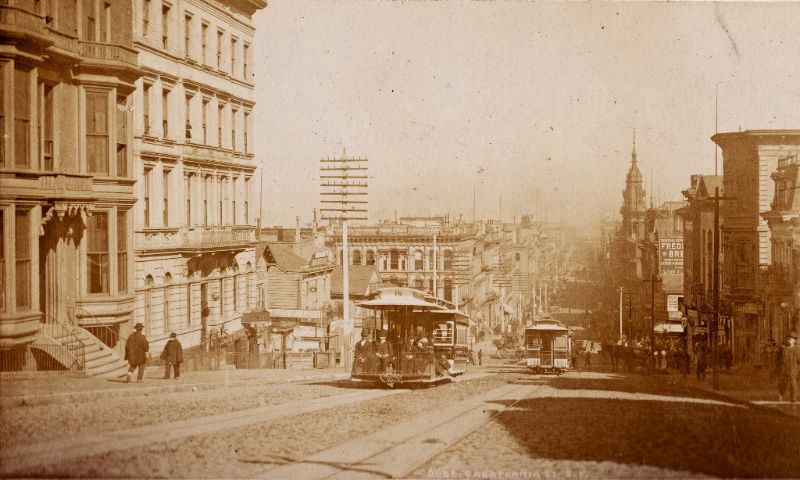
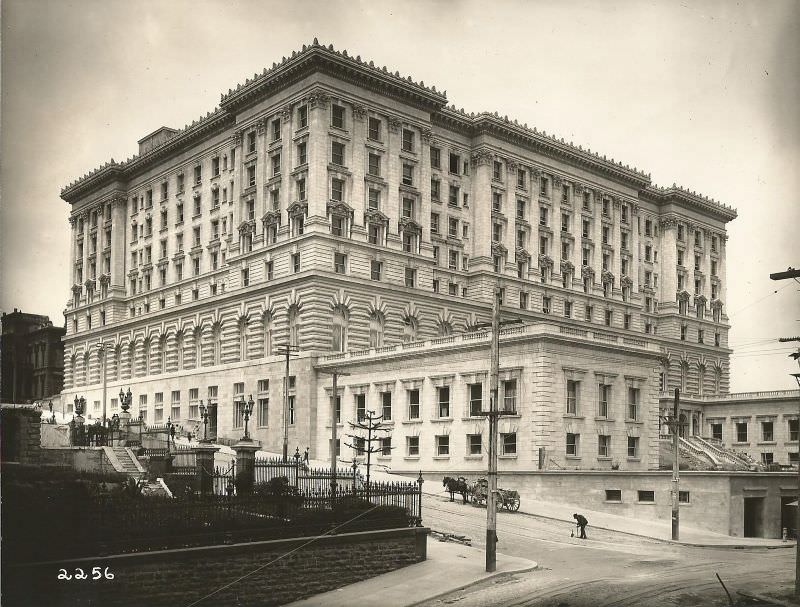
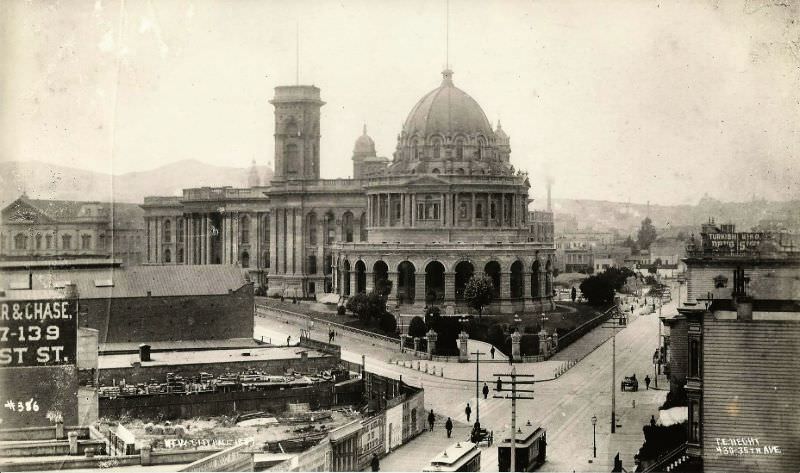
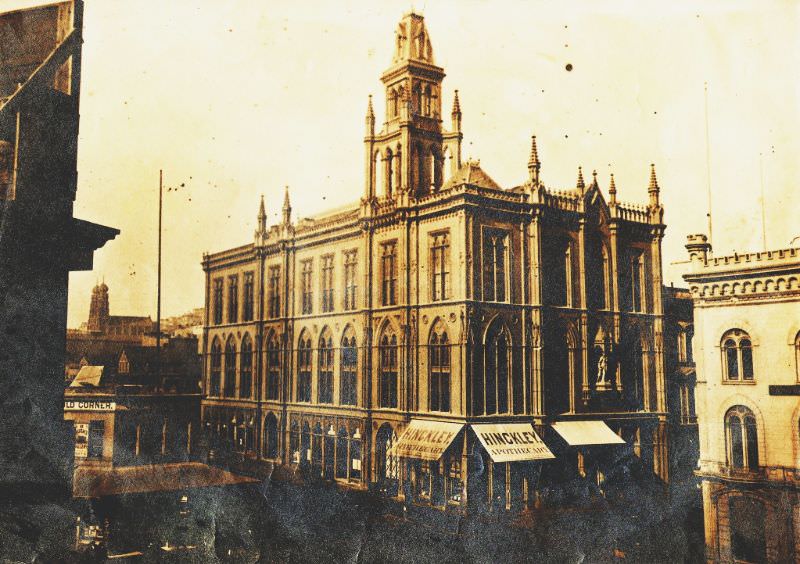
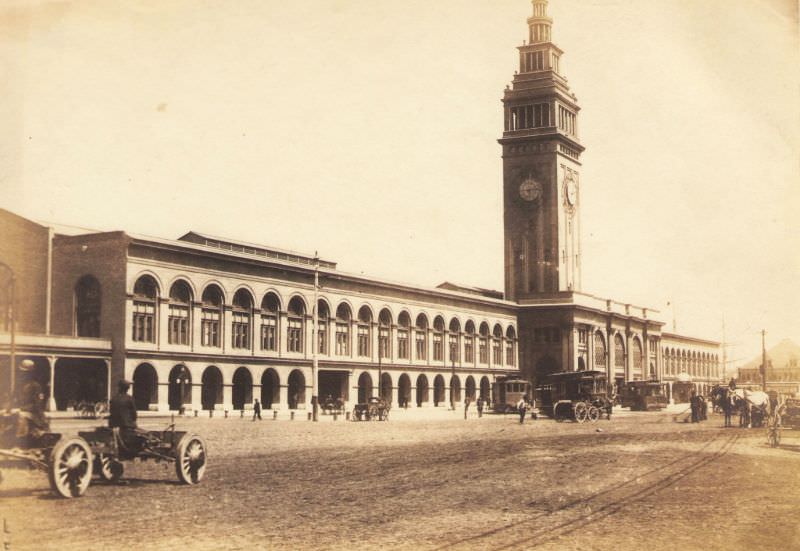
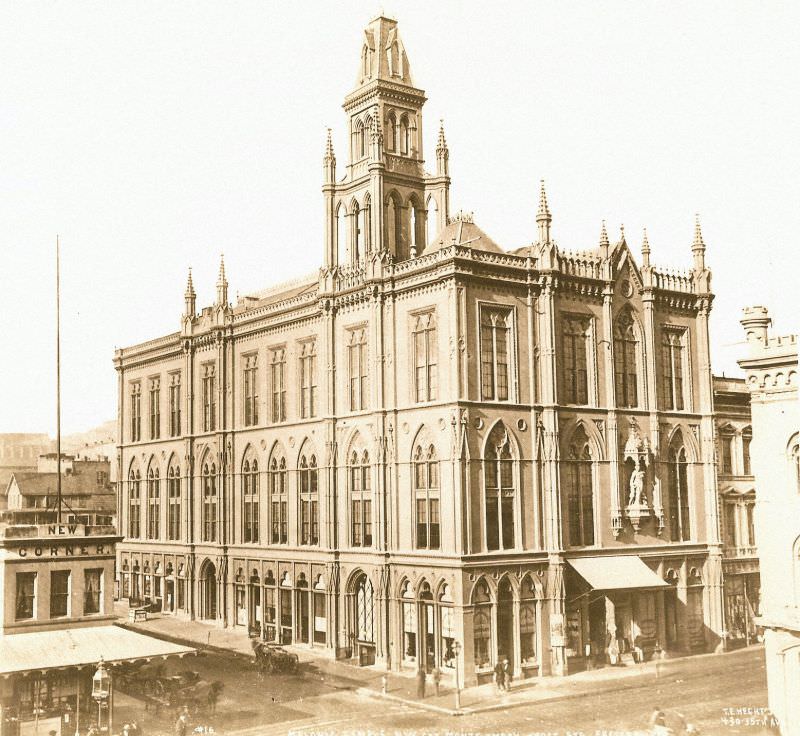
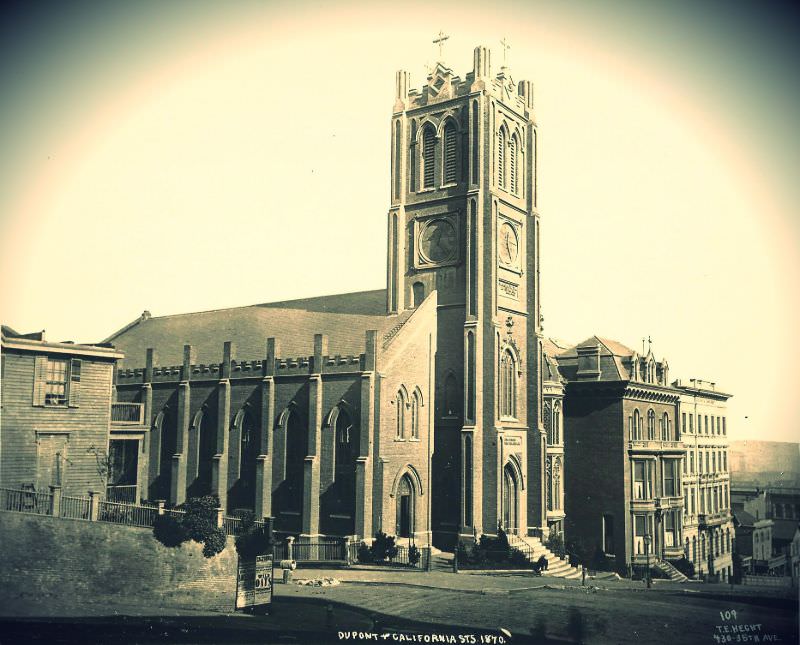
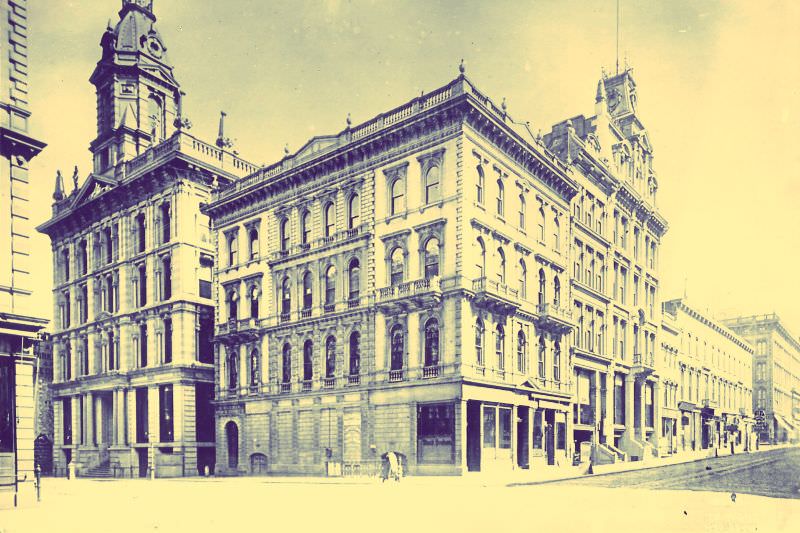
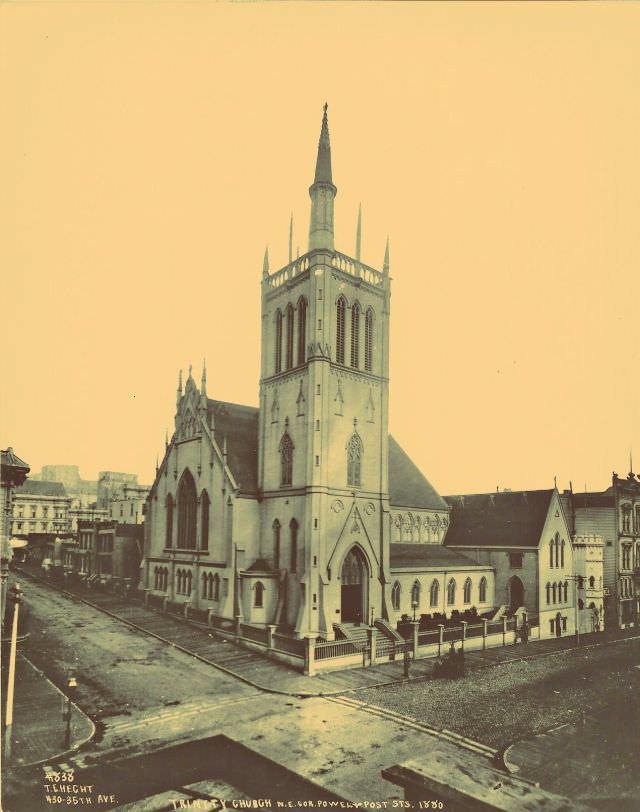
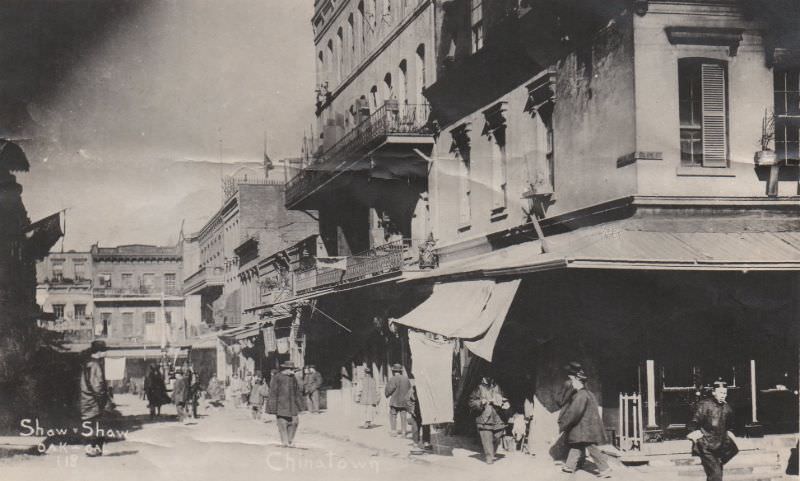
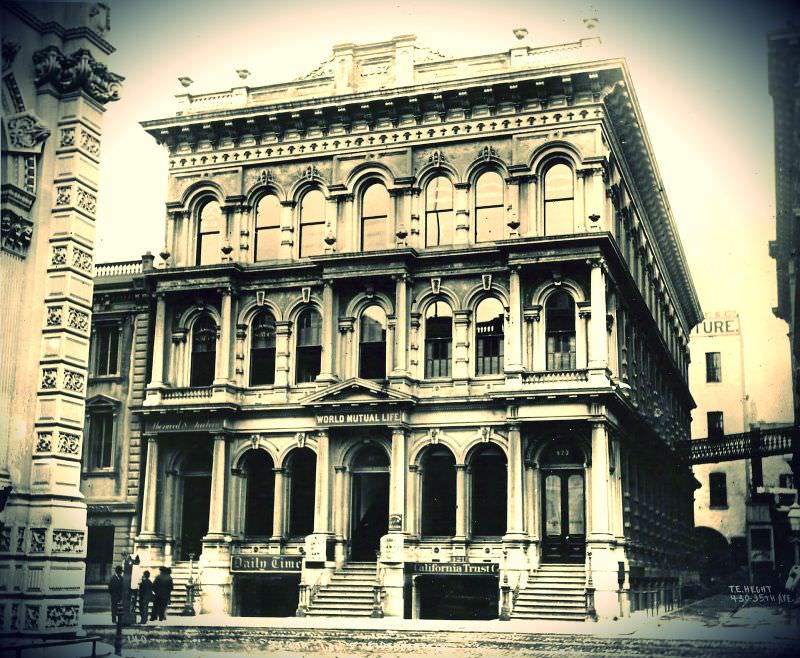
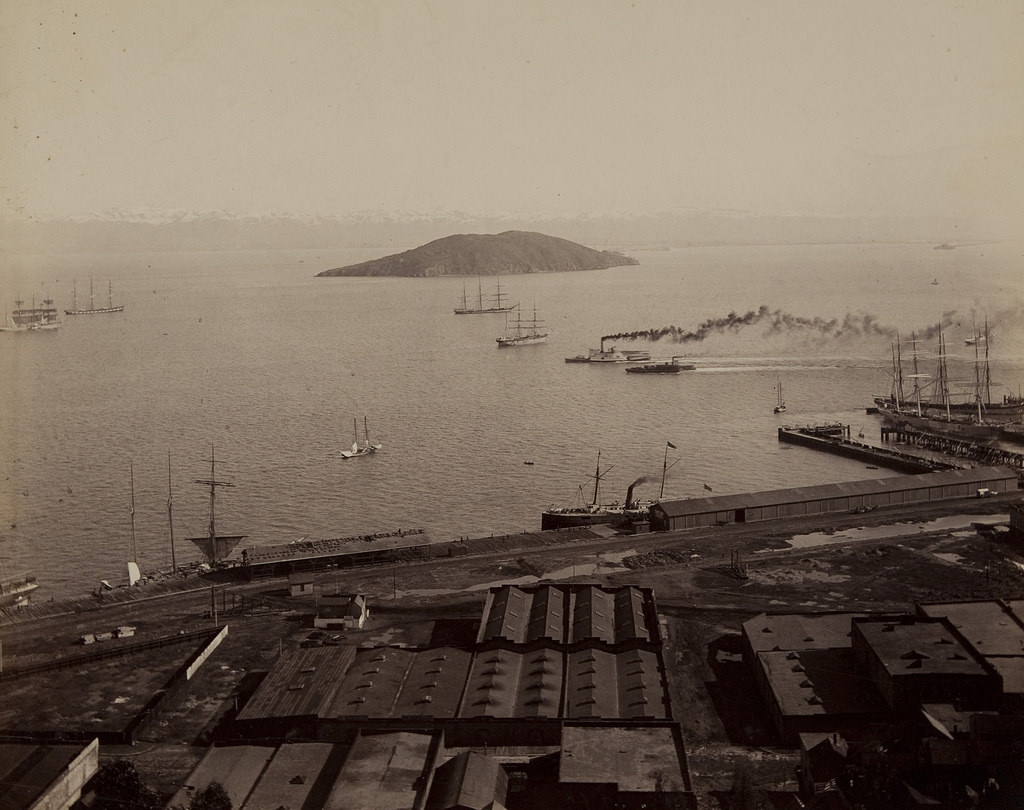
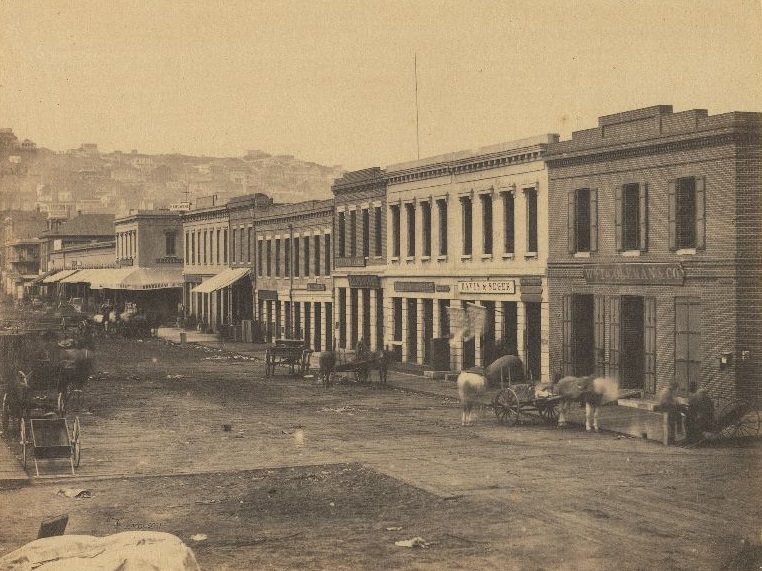
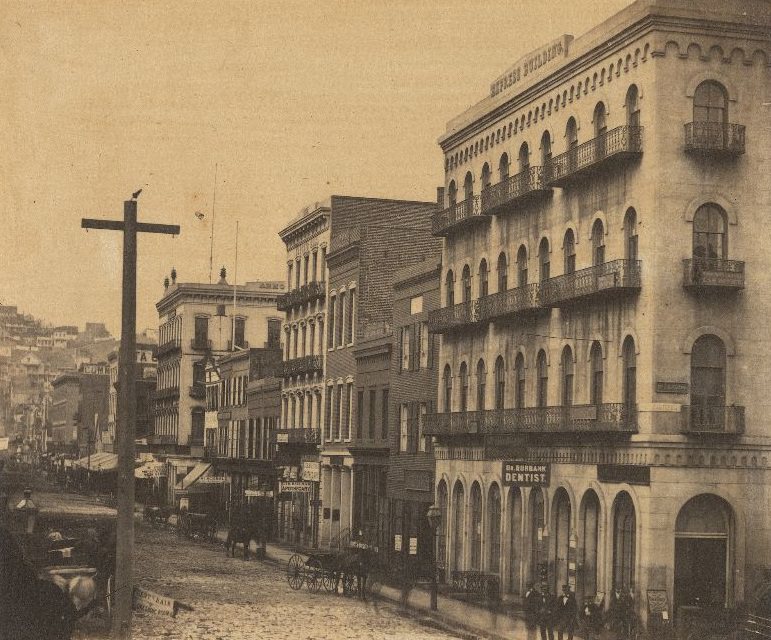
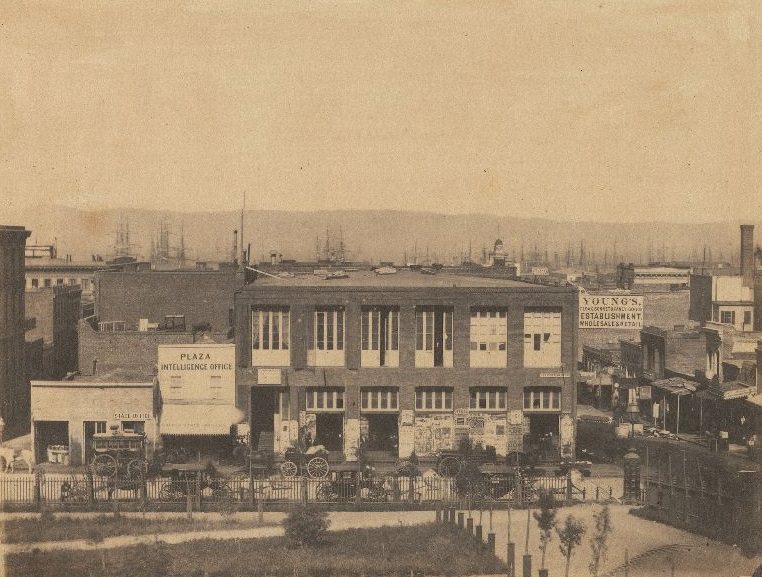
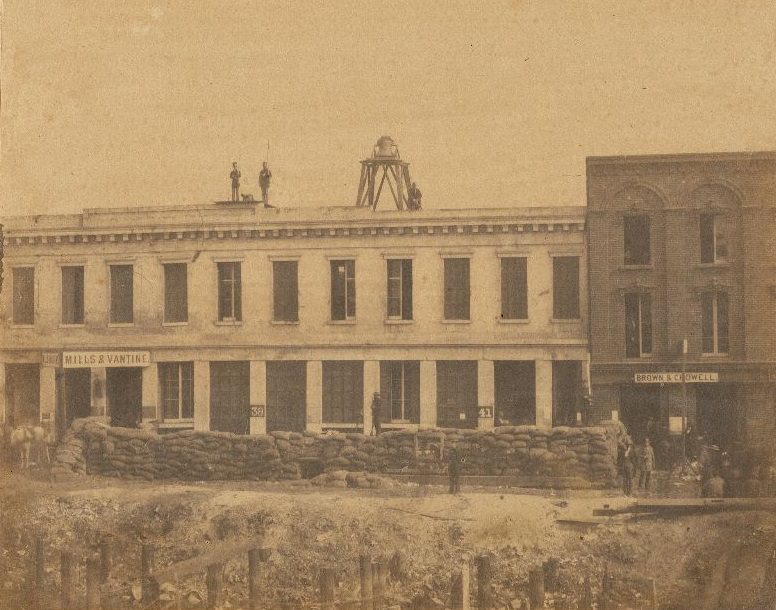
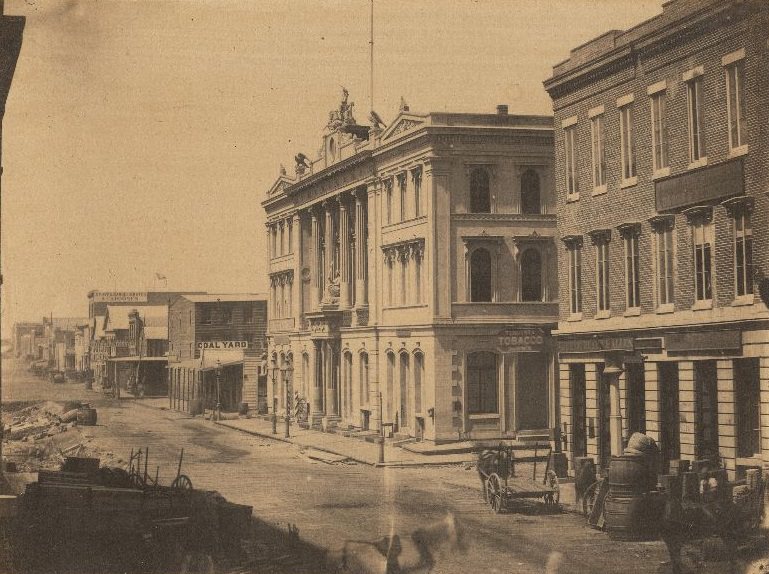
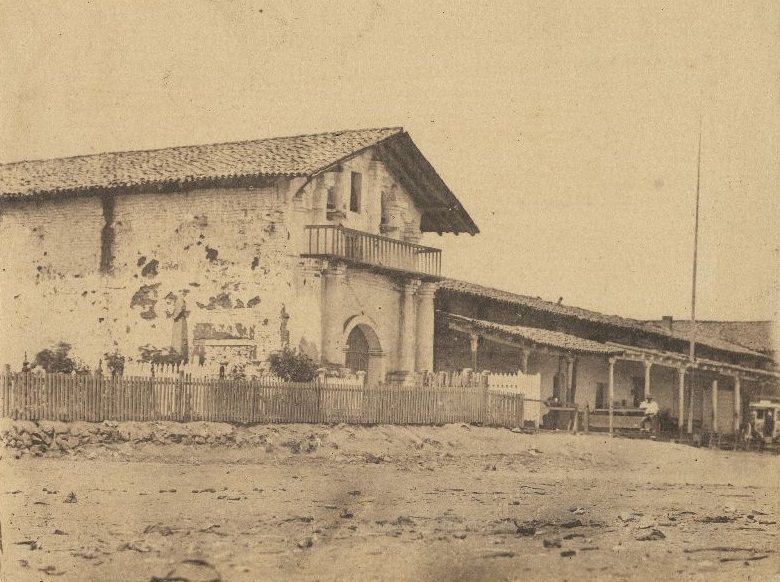
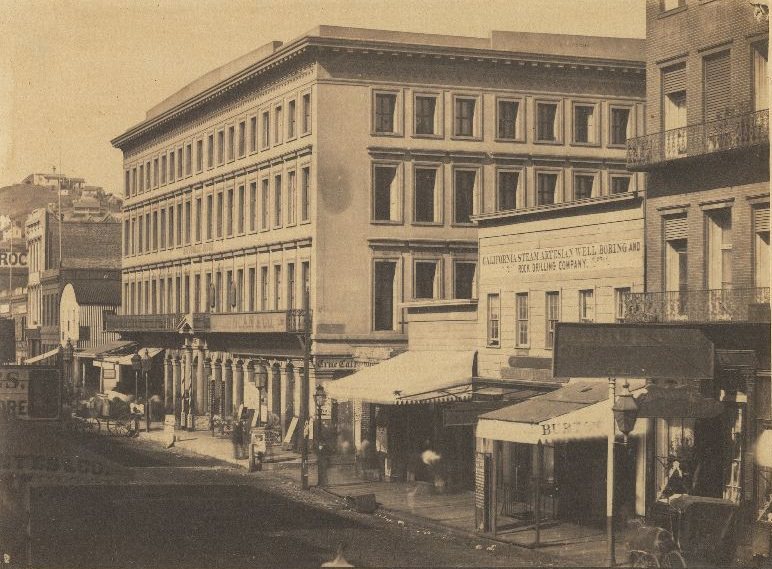
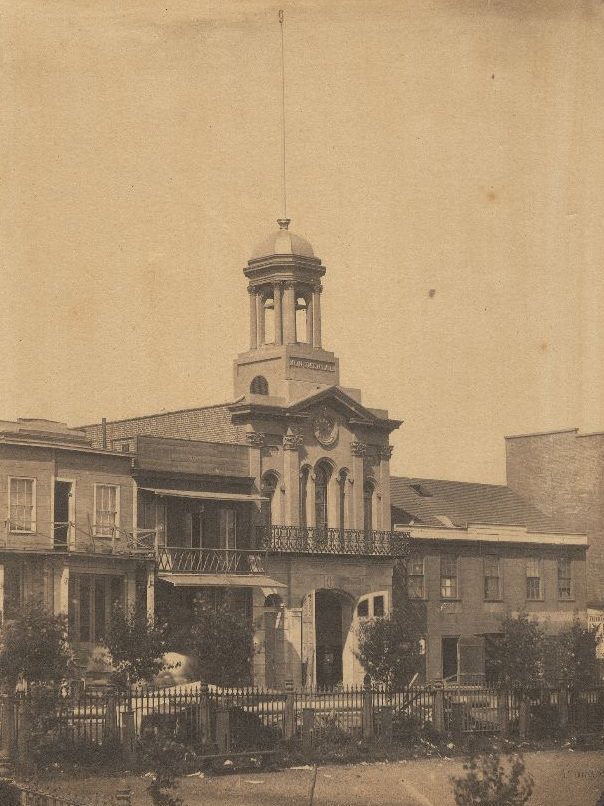
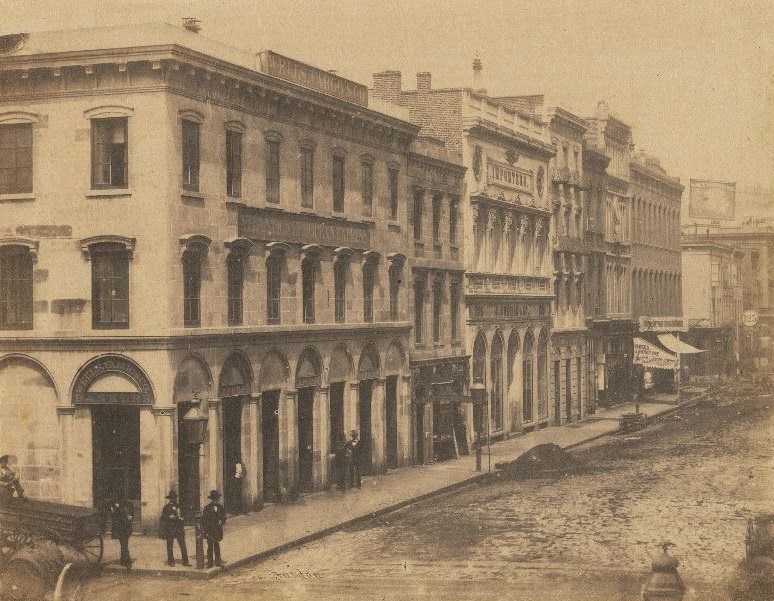
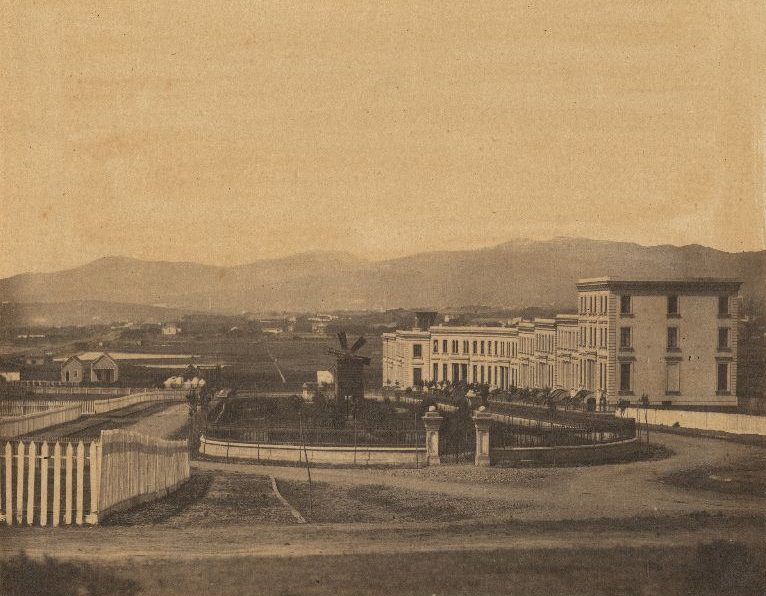
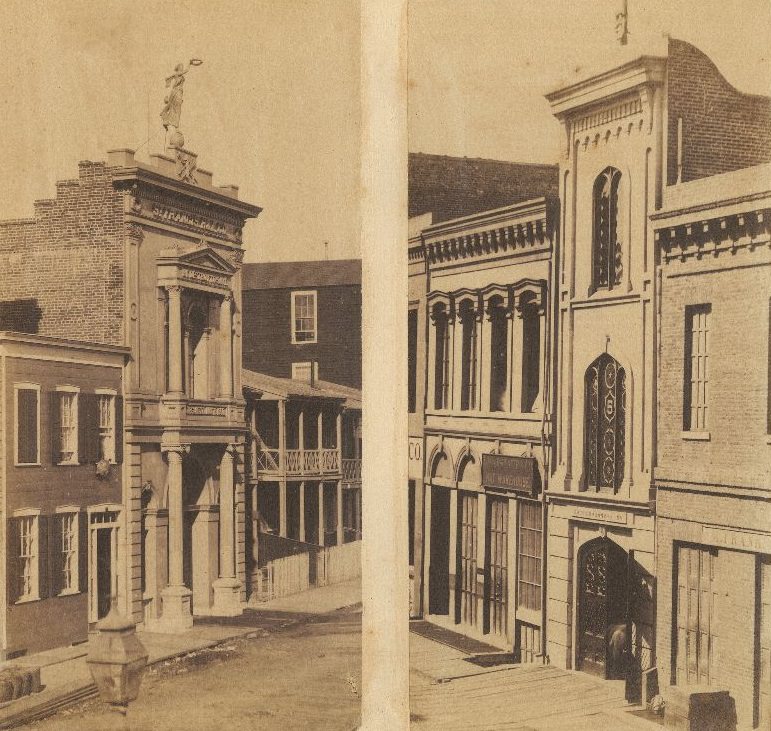
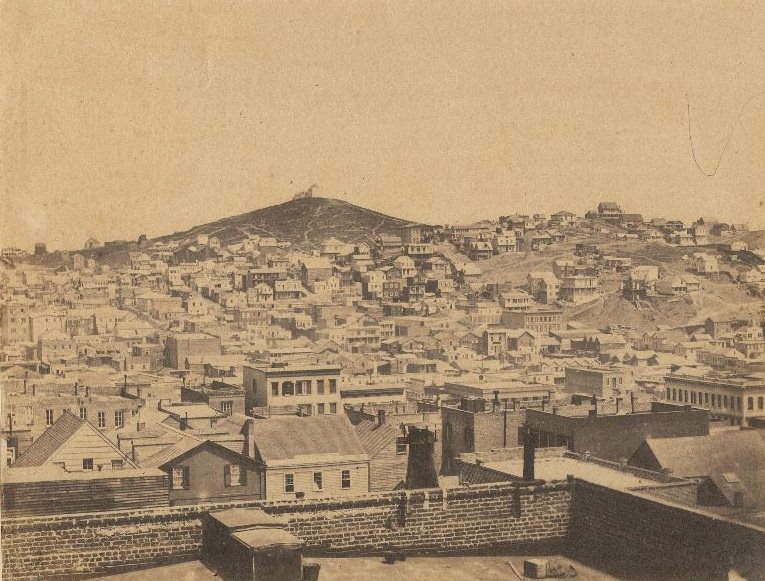
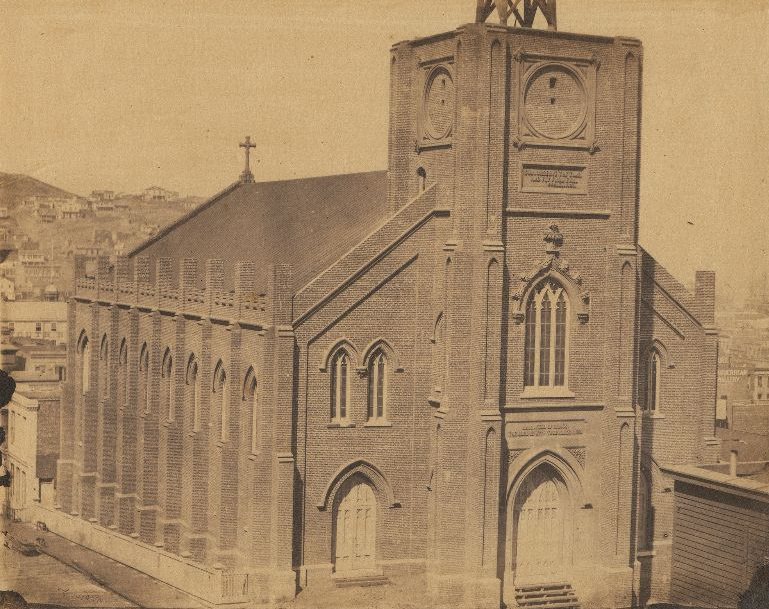
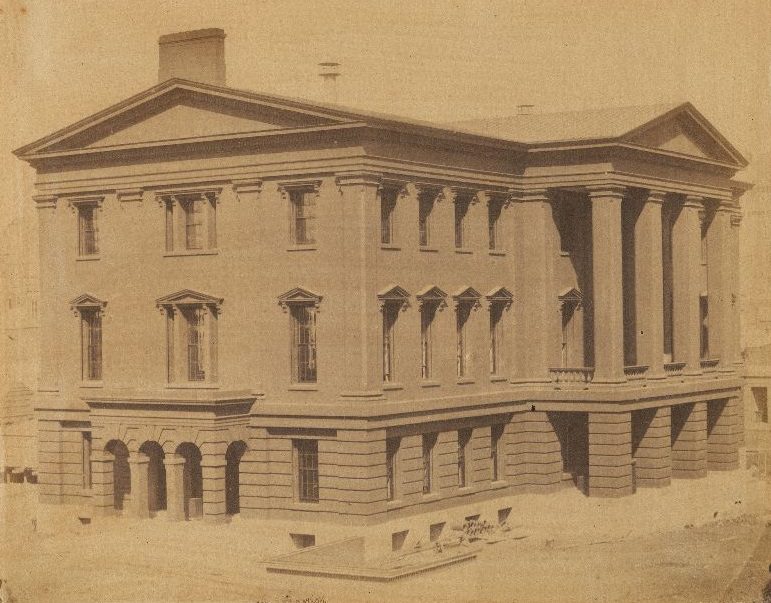
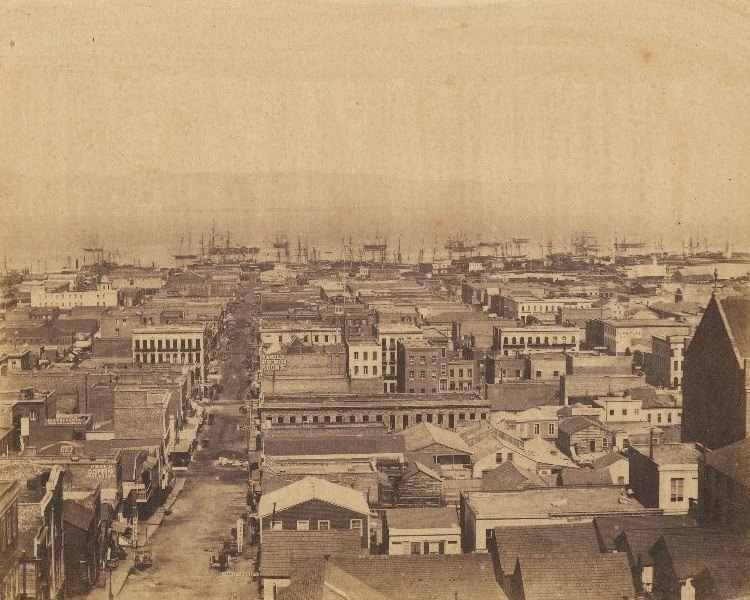
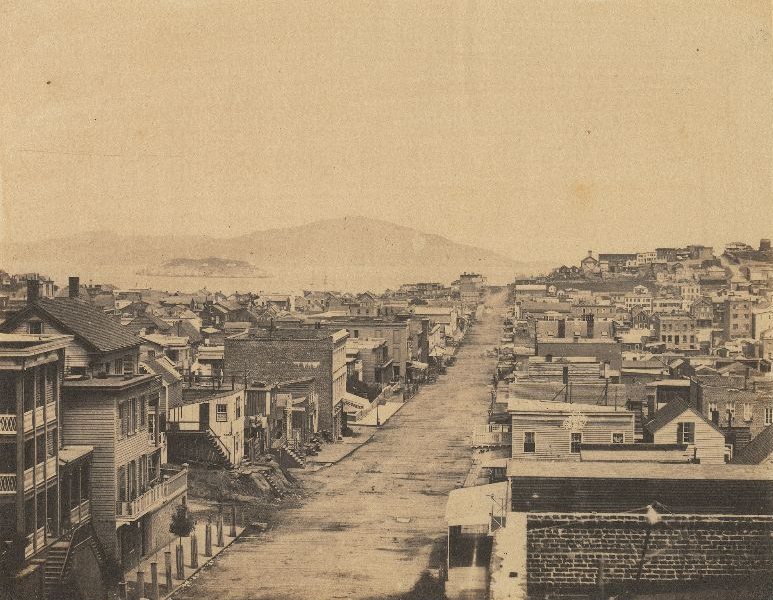
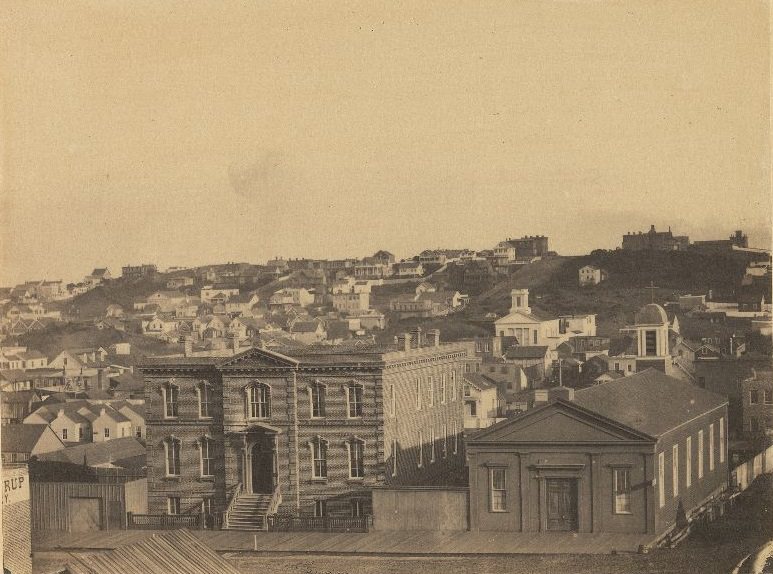
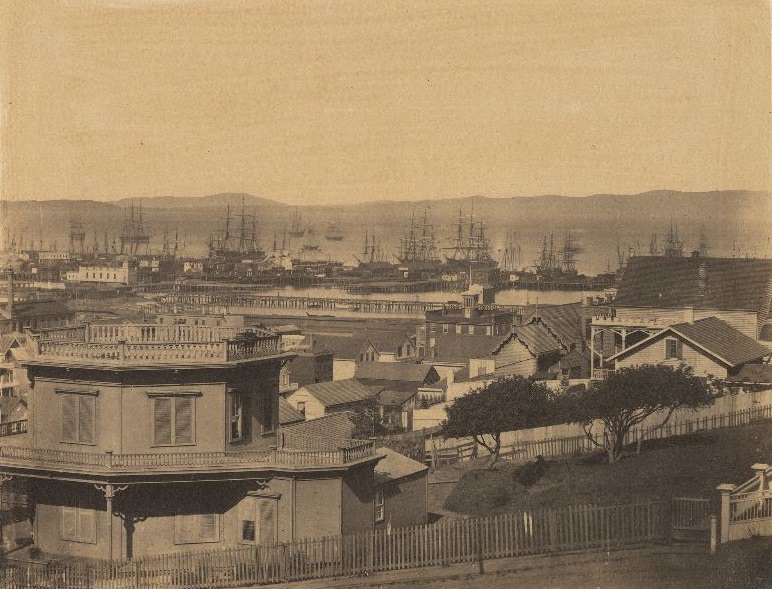
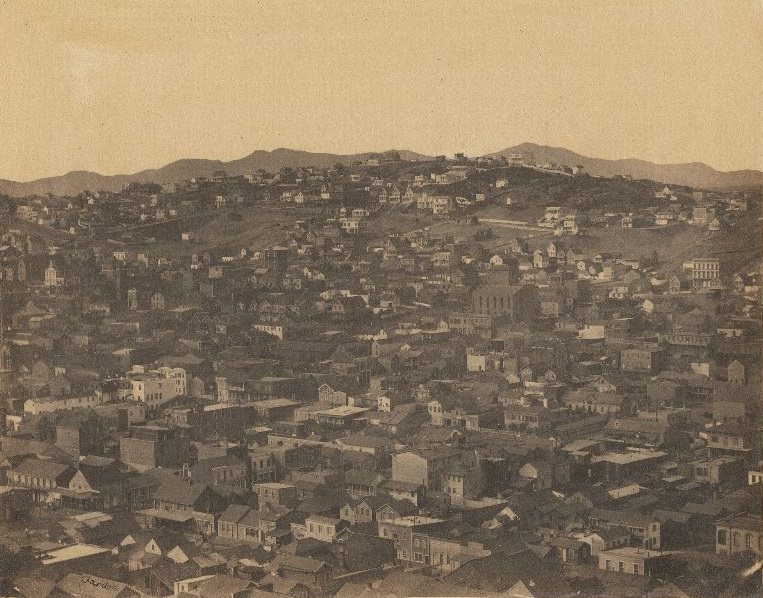
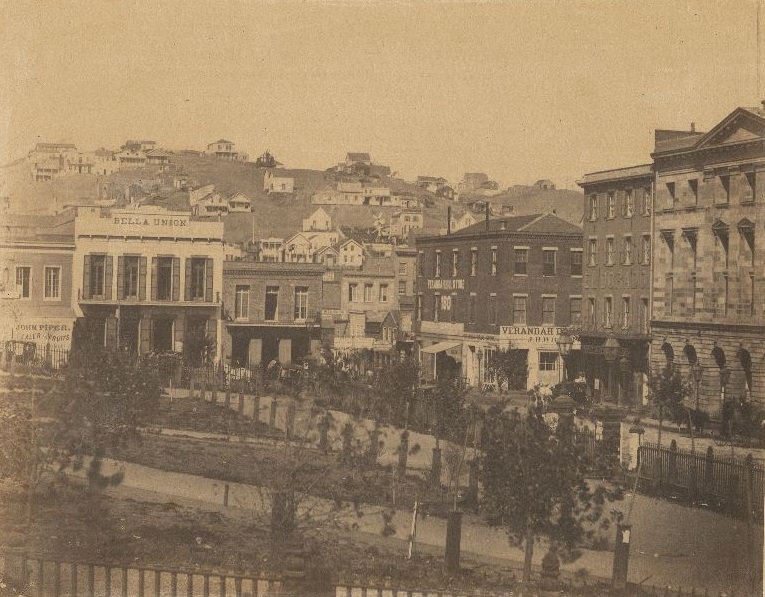
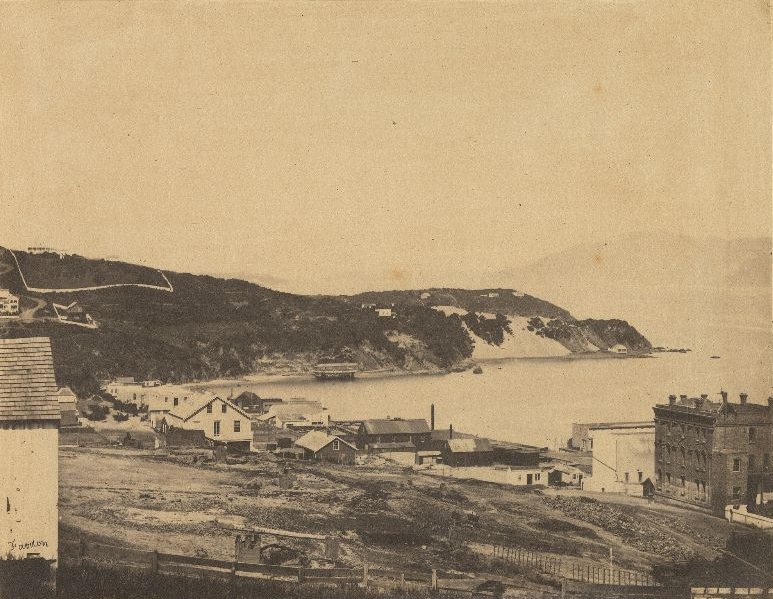
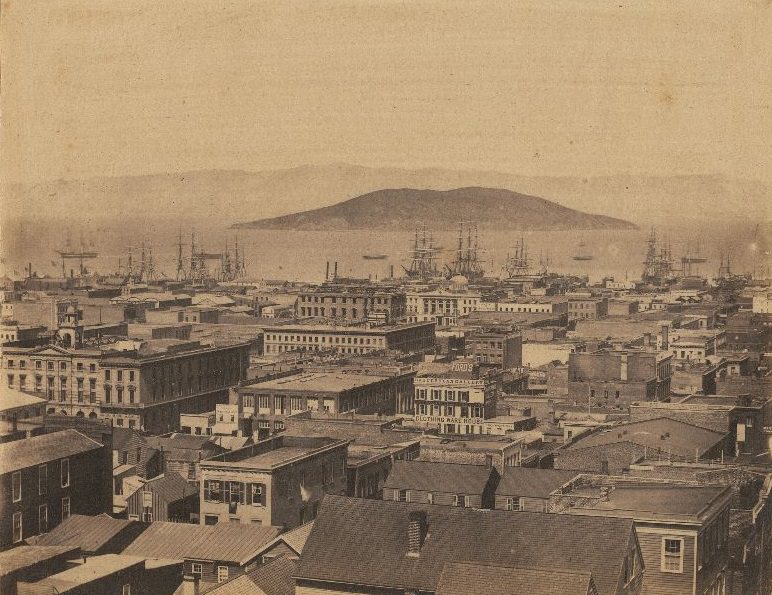
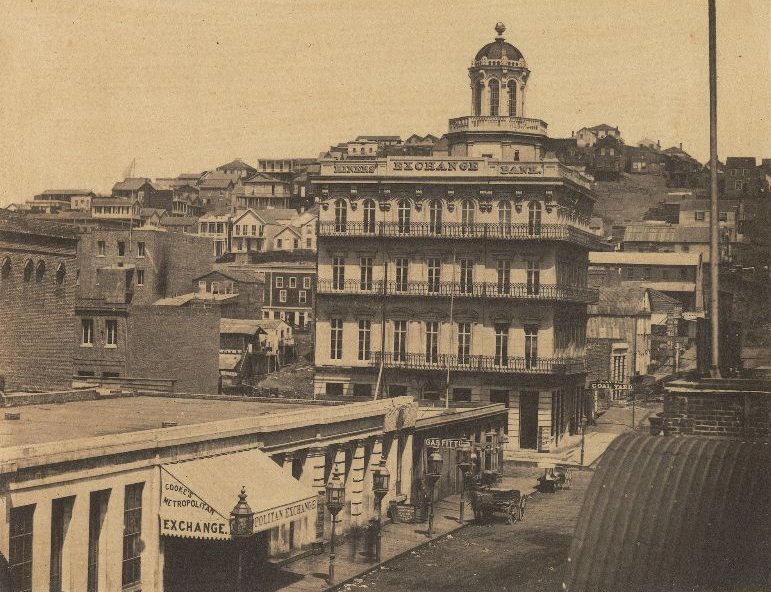
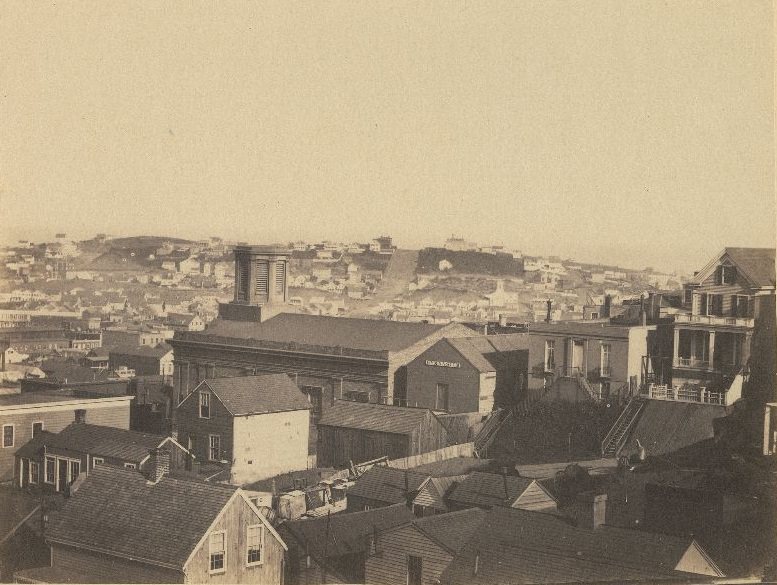
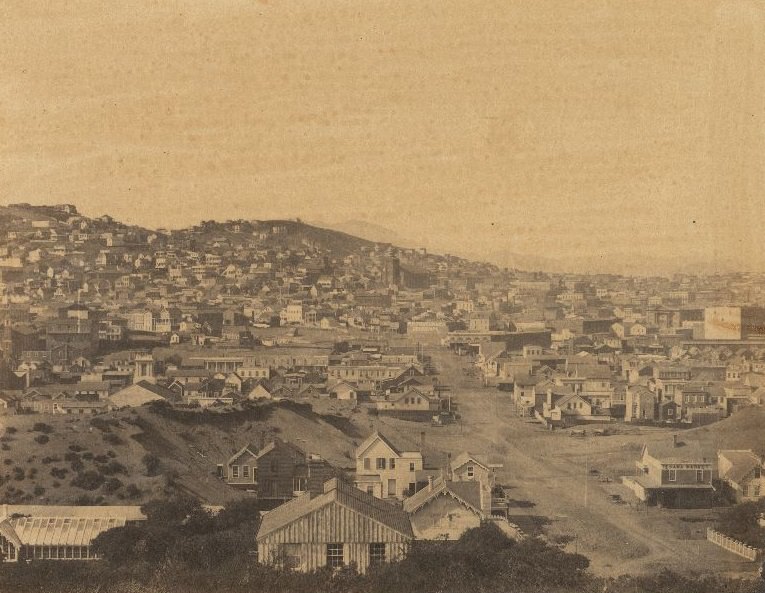
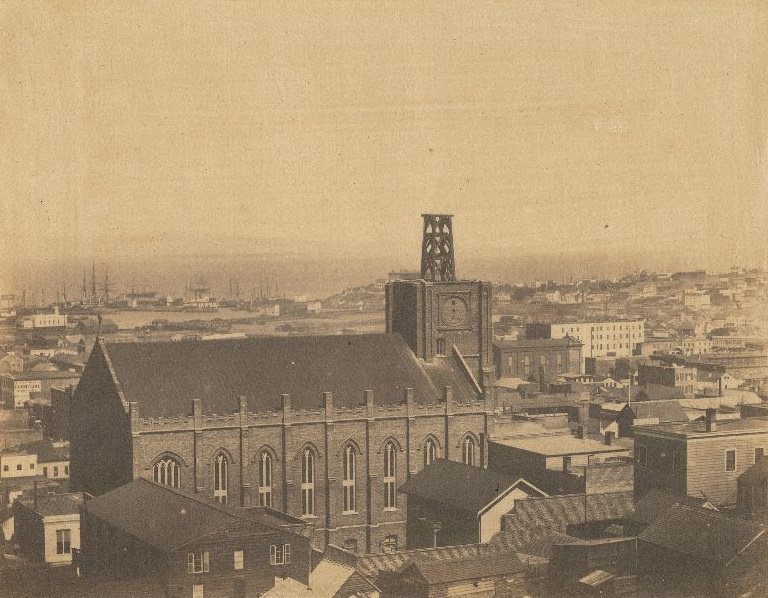
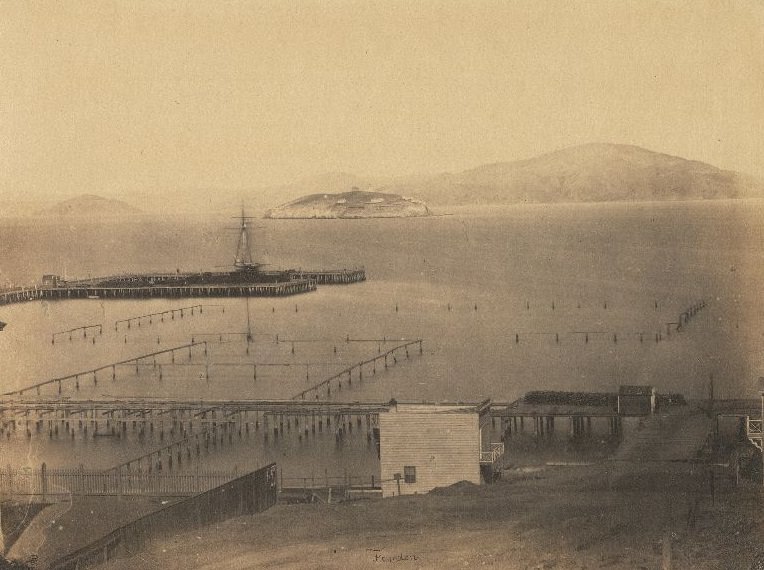
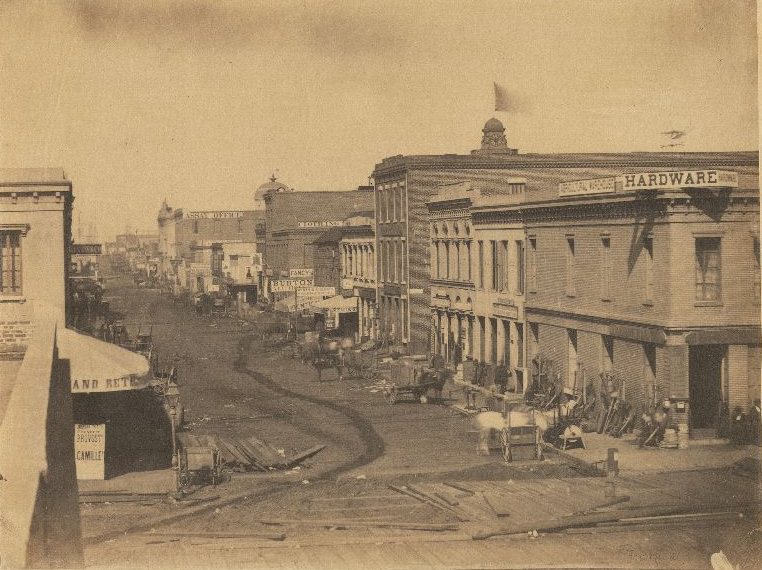
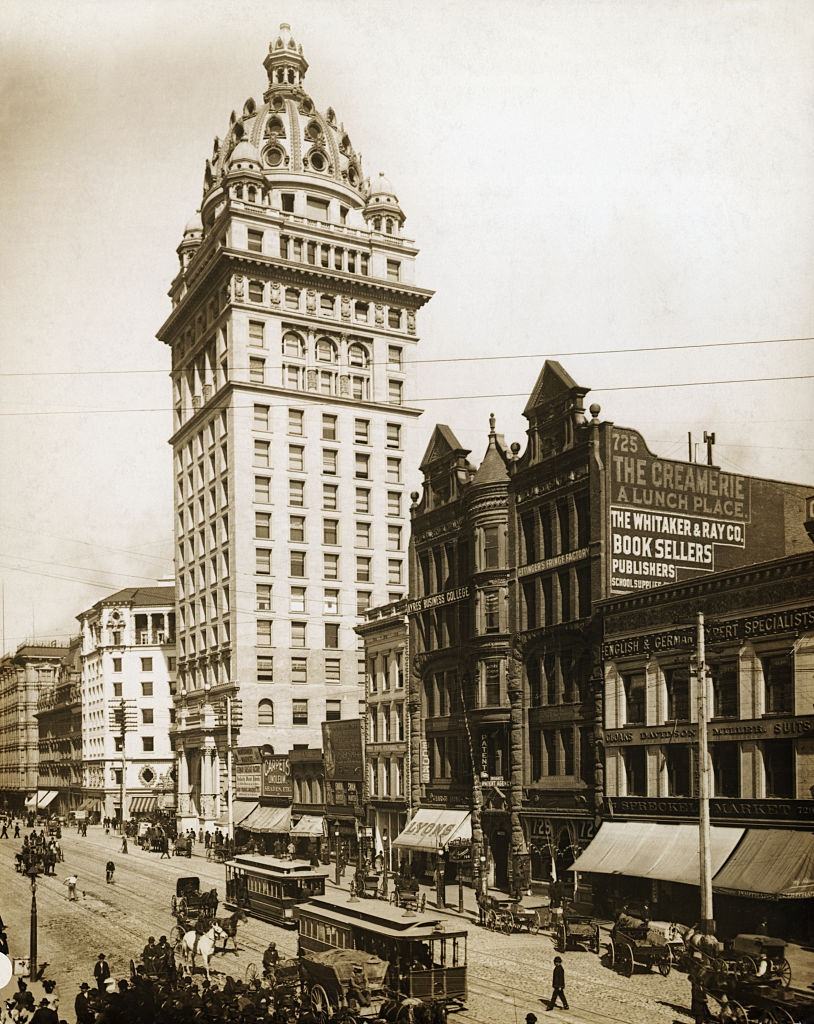
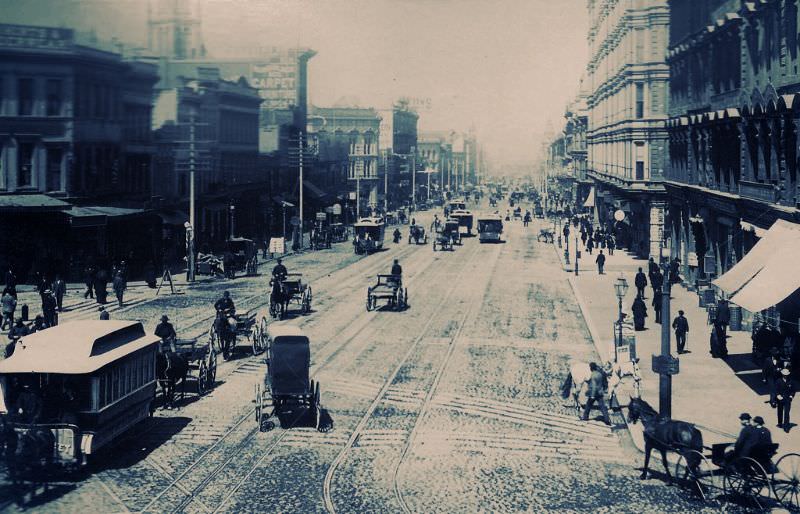

The last one says it’s Powell, looking north from Union Square. The peak on Powell is at California, and we can count the intersections: Post (where the camera is), Sutter, Bush, Pine, and then the last we can see is California.
And the relative grades on Powell between each intersection look much as today’s.
It can’t possibly be the same tree, but the trees today on the west side of Powell between Sutter and Bush have the same tilt toward the street as the tree in the 1890s photo.
In one of the photos, I could make out my great great grandparents house, the pic along California street from Larkin westward.
Love old photos of the bay. So much has changed yet so much endures.
Great photos and easy to scroll through